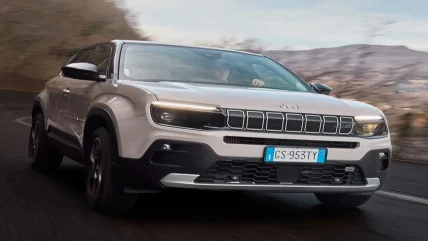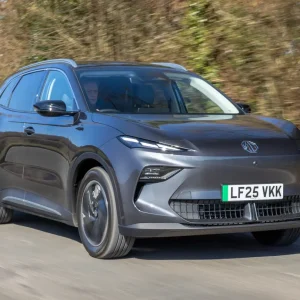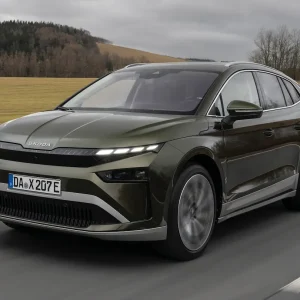
Whenever you ask anyone from one of the myriad Stellantis brands to explain how they intend to avoid pilfering sales from in-house rivals there tends to be a lot of coughing and stammering. The fact is, they can’t. It’s no surprise then that with so much shared componentry and broadly similar pricing structures involved, design and brand image have become more crucial than ever.
The Jeep Avenger may have a lot in common with the Peugeot 2008, DS3 Crossback and Vauxhall Mokka but if you’re smitten with the idea of authenticity, attitude and off-road pedigree, then that Jeep badge and chunky rock-buster styling may just sway you. Don’t get us wrong, the Avenger is not the type of vehicle that’s going to climb every mountain and ford every stream, nevertheless, Jeep is keen to point to certain core brand values, such as the Avenger’s 200 millimetres of ground clearance, 20-degree approach angle, 20-degree braking angle and a 34-degree departure angle. Good to know if you’re planning a trip up the Orinoco any time soon.
The new hybrid model features a 1.2-litre 100hp turbocharged three-cylinder petrol engine married to an electric motor secreted within the 6-speed twin-clutch automatic gearbox. While the electrifying side of matters is handled by a 48v system, which draws its power from a 0.9Kwh lithium-ion battery located under the passenger-side floor, Jeep reckons, the benefits of this approach include, silent start-up and drive away, a hushed traffic jam creep mode and sufficient electric motivation to complete parking manoeuvres without recourse to petrol power. There are seven drive modes, including three for various off-road conditions, along with descent control to reduce the likelihood of downhill skidding – useful if your driveway hasn’t been gritted.
Additional promises include the ability to drive up to a kilometre using only electric power, quieter stop-start activations, economy-boosting petrol engine shutdown when coasting and electric torque assistance to aid gearshift smoothness. To be fair, other than some engine coarseness at higher revs, the odd gearbox shift-shudder and a few random occasions when the engine takes it upon itself to unilaterally raise the revs to boost the battery strength, it is all pretty well integrated. What is not so impressive, is the economy-seeking gear ratios, which cause the engine to labour and transmit a pronounced amount of boom and vibration with every subsequent upshift.
As for the dynamic aspects, although the Avenger’s steering could do with a tad more precision, it is encouragingly light at low speeds and allied to an impressively tight turning circle, it is clear the Avenger is better suited to the urban jungle than the real thing.
On faster routes the suspension feels nicely judged, delivering a pleasing blend of comfort and control while grip levels are reassuringly secure. At higher speeds everything feels encouragingly planted, consequently, long-distance journeys should be relatively stress-free, although we would avoid the glass sunroof as it does create a significant amount of wind noise at motorway speeds. Thanks to the rather blocky design and chunky side mouldings the Avenger looks larger than it is, but no amount of smoke and mirrors can disguise the limited interior space. Thankfully there is a decent amount of leg, head and elbow room up front and while the dashboard features the kind of maze-like infotainment screen common to most cars these days, the climate controls sit separately on a row of easily hit piano-style buttons. Beneath these lie the drive select buttons, which may seem somewhat left-field but unlike a stalk or a lever, they do eliminate any error when moving between forward and reverse.
Further back, things are definitely on the tight side. Although this shouldn’t cause too many issues if you’re an empty nester or still at the nursery run stage, both you and the teenager sitting behind you certainly won’t appreciate having their knees jammed into the back of your seat.
Jeep Avenger 1.2 e-Hybrid Summit
P11D: £29,144
Residual value: 51%
Depreciation: £13,820
Fuel: N/A
Service, maintenance and repair: £2,093
Cost per mile: N/A
Fuel consumption: 57.6mpg
CO2 (BIK %): 114g km (27%)
BIK 20/40% a month: £131/£262
Luggage capacity: 380 litres
Engine size/power: 1,199cc/100hp





